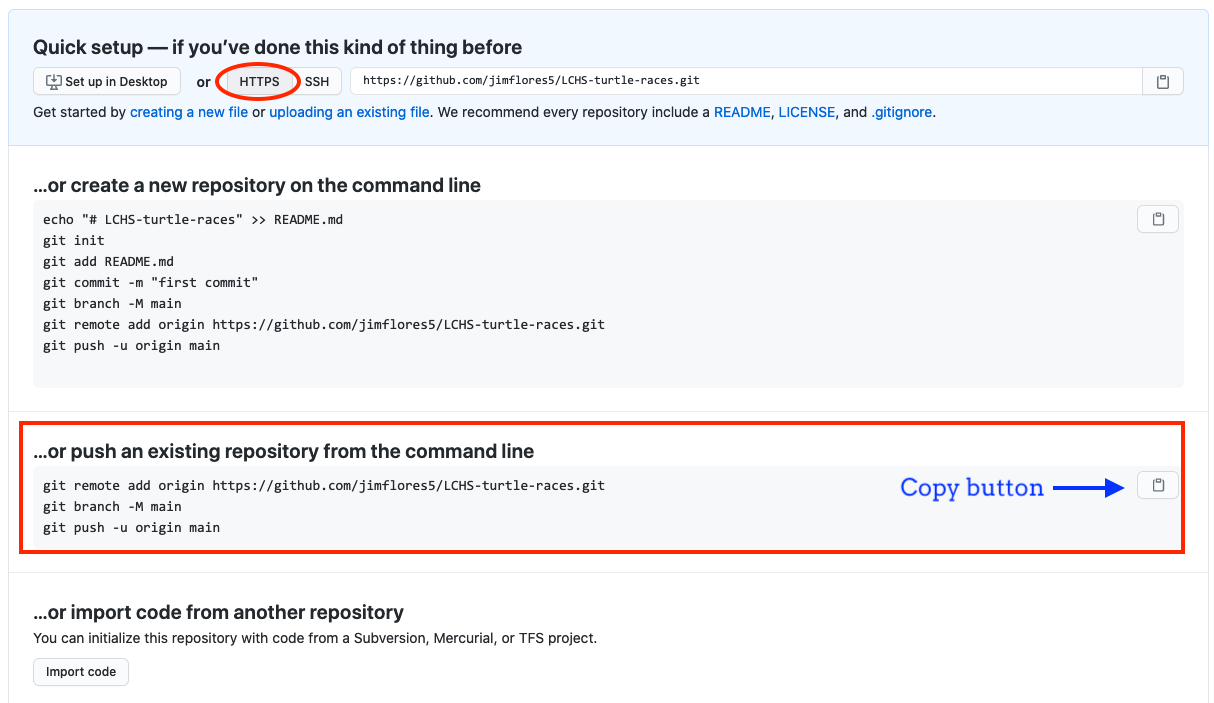
- #Git add remote repository to existing how to#
- #Git add remote repository to existing install#
- #Git add remote repository to existing code#
- #Git add remote repository to existing windows#
The staged minimal.html file can be committed by running the following command: Now your Git bash should show the current path as shown in the screenshot belowĪt this step, the file has been staged and ready to be committed to the local Git repository (the third stage). The double quotes are mandatory despite no spaces in the path. Open Git bash and type in the following command to browse to the folder created.We will assume that the address to this folder is "C:\Projects\Git" where you will create your Git projects.
#Git add remote repository to existing windows#
Create a new folder in your Windows file explorer.In this section, we'll explain the steps required to create a new project with Git. The following sections will explain each workflow in details and with Git bash commands.
#Git add remote repository to existing code#

The three workflows of Git is the right place to get started. The three workflows to create a Git repository The remote repository has all the previous three stages internally. The fourth stage is the last step in a Git workflow, and it's basically where the code will be pushed (uploaded) to the remote repository on the internet. In other words, until step 3, no files have been uploaded to the remote repository at GitHub (or any separate remote repository) yet and here comes the fourth stage. The above three stages represent your local Git repository. Files that are committed in the staging area are moved to the Git repository and added to the commit history. In this step, Git creates the local repository and adds the ".git" folder in the project folder structure, and it contains the actual Git repository. Stage 3: The Git repository (or the commit history) Files in the staging area are tracked and managed by Git. You can refer to this stage as "Git index", and it's as simple as an intermediate area that queues up your changes in one place for the next commit.

In this stage, changes may or may not be tracked and managed by Git. The working directory is mainly the directory that holds all your project files on your computer. Most of the online resources describe this as the three stages of Git, but we found that it's more appropriate to describe them as four stages. In this section, we found that it's crucial to start by introducing the necessary information about the four stages of Git in which will show how you can add a file to a Git repository and the steps it passes through.
#Git add remote repository to existing install#
Whether you installed Git bash or not, we recommend that you check the Easiest way to install Git bash commands on Windows and make sure you have all the right installations and configurations set. Prerequisites to starting with Git repositoriesīefore diving into Git, it's important to mention that you need to have Git bash command prompt adequately installed and configured on your Windows machine and it responds correctly to Git commands without errors and you have the necessary knowledge about bash commands.
#Git add remote repository to existing how to#


 0 kommentar(er)
0 kommentar(er)
